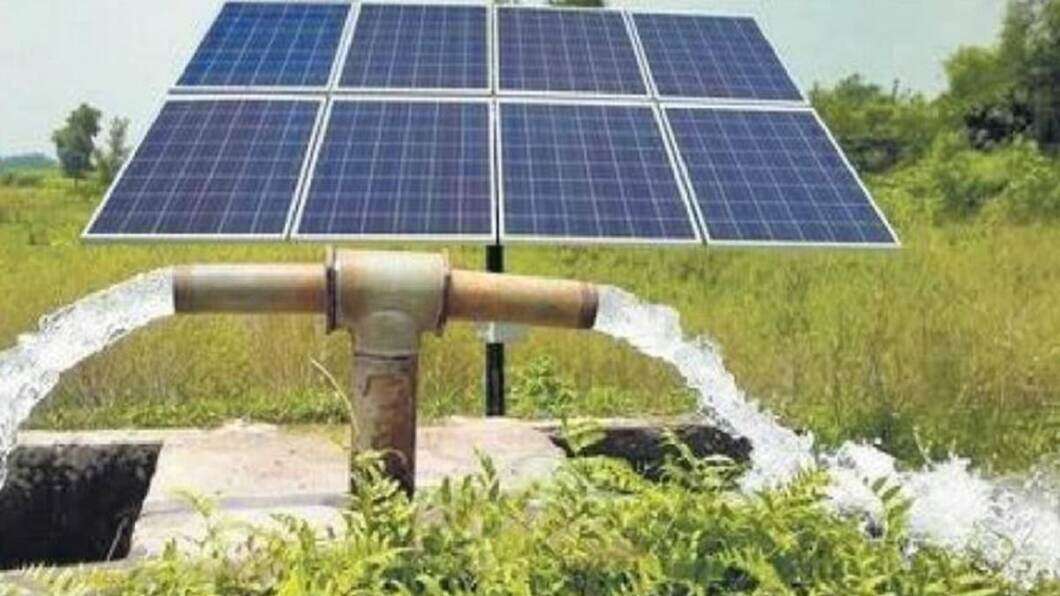The Pradhan Mantri Kisan Urja Suraksha evam Utthan Mahabhiyan (PM-KUSUM) Scheme, launched in 2019, aims to enhance energy security for farmers in India and promote the use of clean energy in the agriculture sector. The scheme seeks to achieve India’s commitment to increasing the share of non-fossil fuel sources in the country’s installed capacity of electric power. In a bid to boost the implementation of solar projects on agricultural lands, the central government is considering linking the PM-KUSUM scheme with the Agriculture Infrastructure Fund (AIF). This move aims to provide farmers with access to cheaper loans for setting up solar projects and procuring equipment.
Components of PM-KUSUM Scheme:
Component A: Installation of Small Solar Power Plants (SEPP): Beneficiaries
- Individual farmers, groups of farmers, cooperatives, panchayats, Farmer Producer Organizations (FPOs), and Water User Associations (WUAs) can set up solar power plants with capacities ranging from 500 kW to 2 MW.
- If these entities are unable to arrange the required equity, they can opt for developing the plants through developers or local distribution companies (DISCOMs).
- DISCOMs will purchase the solar power generated at a feed-in-tariff determined by the State Electricity Regulatory Commission.
- DISCOMs will receive a performance-based incentive (PBI) of Rs. 0.40 per unit purchased or Rs. 6.6 lakh per MW of installed capacity, whichever is less, for five years from the Commercial Operation Date (COD).
Buy Prime Test Series for all Banking, SSC, Insurance & other exams
Component B: Standalone Solar Powered Agriculture Pumps: Budget
- Individual farmers will be supported in installing standalone solar-powered agriculture pumps of up to 7.5 HP in off-grid areas without access to grid supply.
- The scheme provides a capital subsidy of 30% of the benchmark cost or the tender cost, with the state government offering a minimum subsidy of 30%.
- Farmers can avail bank finance, paying only 10% of the cost initially and the remaining 30% as a loan.
- In select regions, such as North Eastern States, Sikkim, Jammu & Kashmir, Himachal Pradesh, Uttarakhand, Lakshadweep, and Andaman & Nicobar Islands, the capital subsidy is 50%.
Component C: Solarisation of Grid-connected Agriculture Pumps
- Farmers with grid-connected agriculture pumps can receive support to solarize their pumps.
- Solar PV capacity up to twice the pump capacity in kilowatts is allowed.
- A capital subsidy of 30% of the benchmark cost or the tender cost is provided, with the state government offering a minimum subsidy of 30%.
- Farmers can avail bank finance, paying only 10% of the cost initially and the remaining 30% as a loan.
- In select regions, the capital subsidy is 50%.
Integration with Agriculture Infrastructure Fund (AIF):
To accelerate the implementation of solar projects on agricultural lands, the Ministry of New and Renewable Energy is considering linking the PM-KUSUM scheme with the Agriculture Infrastructure Fund (AIF). The AIF provides medium to long-term debt financing facilities for investment in projects related to post-harvest management infrastructure and community farming assets. By tapping into the AIF, farmers can access cheaper loans for setting up solar projects and procuring equipment. The central government will bear 30% of the project cost, with the remaining balance shared between the state government and the beneficiary farmer.
Also Read:
- Ayushman Bharat Pradhan Mantri Jan Arogya Yojana: Revolutionizing Healthcare Access in India
- National Mission on Advanced and High-Impact Research (MAHIR)
- Bima Vahak Scheme: Ensuring Financial Security through Insurance
- Leadership Development Programme in Science & Technology: Nurturing Next Gen Scientific Leaders





 Which City is known as the City of Bambo...
Which City is known as the City of Bambo...
 Who was the First Prime Minister of Indi...
Who was the First Prime Minister of Indi...







